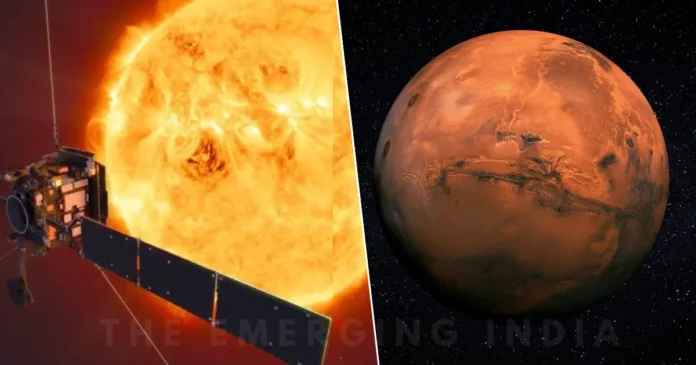
ISRO Missions, chandrayaan-3: Just a week ago, India achieved a significant milestone by successfully launching Chandrayaan-3, taking a step closer to becoming the fourth country in history, alongside the US, Russia, and China, to achieve a moon landing. This accomplishment fills us with immense pride and hope for more such remarkable achievements in the future, as ISRO gears up for its upcoming missions. The possibilities are endless, and it’s exciting to think about the potential contributions our country can make to space exploration in the years to come.
ISRO’s Upcoming Missions: Chandrayaan-3 & All
1. ADITYA-L1-2023
Cost: Rs 378 crore Expected
Aditya L1 marks a significant milestone as India’s pioneering space-based observatory-class solar mission, dedicated to studying the Sun. Positioned at Lagrangian point 1 (L1) of the Sun-Earth system, approximately 1.5 million km away from Earth, the spacecraft will orbit the Sun in a halo pattern. This strategic placement at L1 offers a crucial advantage, allowing continuous and unobstructed observation of the Sun, free from any occultation or eclipse.
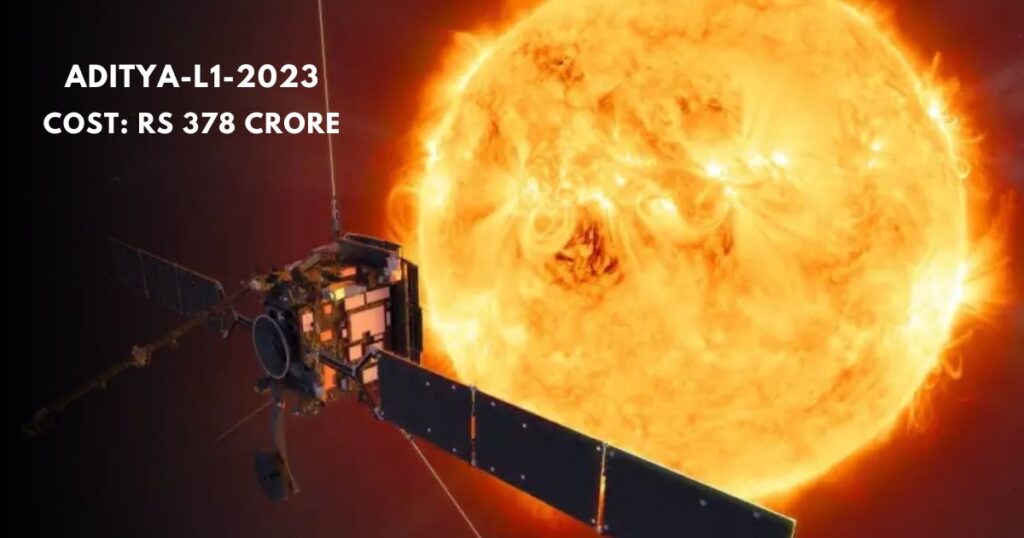
Equipped with seven cutting-edge payloads, the Aditya L1 spacecraft is designed to study different layers of the Sun, including the photosphere, chromosphere, and corona, using a combination of electromagnetic and particle detectors. The unique vantage point at L1 enables four of the payloads to directly observe the Sun, providing valuable insights into solar activities without interruptions.
In addition to direct solar observation, the remaining three payloads on Aditya L1 conduct in-situ studies of particles and fields around Lagrange Point L1. This strategic arrangement ensures a comprehensive and detailed analysis of the Sun’s behaviour and characteristics, offering a deeper understanding of our star’s influence on our solar system.
Overall, Aditya L1 represents a remarkable leap in India’s space exploration endeavours, as it promises to unlock new knowledge and contribute significantly to the global understanding of our Sun and its impact on the Earth and space around us.
Major objectives
• Understanding the Coronal Heating and Solar Wind Acceleration.
• Understanding the initiation of Coronal Mass ejections (CME), flares, and near-earth space weather.
• To understand the coupling and dynamics of the solar atmosphere.
• To understand solar wind distribution and temperature anisotropy.
The uniqueness of the mission
• First spatially resolved solar disk in the near UV band.
• CME dynamics close to the solar disk (~ from 1.05 solar radius) thereby providing information in the acceleration regime of CME that is not observed consistently.
• On-board intelligence to detect CMEs and solar flares for optimised observations and data volume.
• Directional and energy anisotropy.
2. NASA-ISRO SAR (NISAR) Satellite-January 2024
Expected cost: $1.5 billion (approx. 12,296 crore).
A low-earth orbit (LEO) observatory being collaboratively built by NASA and ISRO is called NASA-ISRO SAR (NISAR). To comprehend changes in Earth’s ecosystems, ice mass, vegetation biomass, sea level rise, groundwater, and natural hazards including earthquakes, tsunamis, volcanoes, and landslides, NISAR will map the entire world in 12 days. It will also give spatially and temporally consistent data.
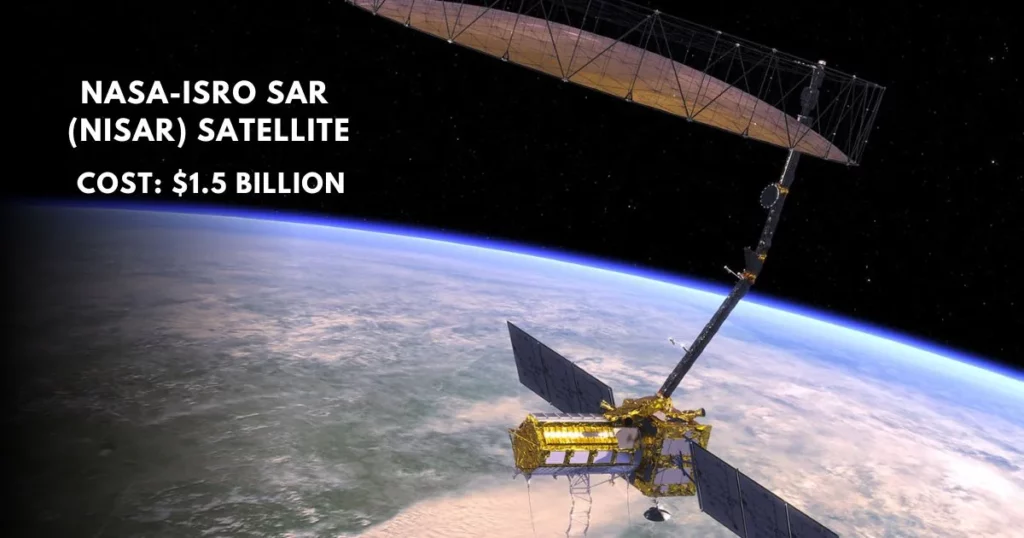
According to ISRO, both organisations would make significant contributions to this flagship relationship. The S-Band SAR payload was provided by ISRO, while NASA is in charge of delivering the L-Band SAR payload system. Both SAR systems will use a sizable (about 12m in diameter) common unfurlable reflector antenna. NASA would also contribute engineering payloads for the project, such as a solid-state recorder, a GPS receiver, a high-rate science downlink system, and a payload data subsystem.
On the GSLV expendable launch vehicle provided by ISRO, the NISAR Observatory will be launched from Satish Dhawan Space Centre (SDSC) SHAR, Sriharikota, on the southeast coast of the Indian peninsula. The launch is anticipated to be ready in January 2024. Additionally, in the first quarter of 2024, the NISAR observatory will be launched on Indian soil.
3. SPADEX-Third quarter of 2024
Cost: Rs 124 crore Expected
The Space Docking Experiment, or SPADEX, is a twin spacecraft mission that ISRO is developing to advance technologies related to orbital rendezvous, docking, formation flying, and other proximity operations with a range of applications in human spaceflight, in-space satellite maintenance, and other proximity operations.
Two IMS-class (200 kilogramme) satellites, Chaser and Target, would be launched as co-passengers or supplementary payloads as part of the SPADEX programme. The orbits of both spacecraft would be slightly altered.
SPADEX-Third quarter of 2024 Objectives
-Autonomous rendezvous and docking
-Controlling one spacecraft with the attitude control system of another spacecraft while in docked configuration.
-Formation flying
4.Mangalyaan-2-2024
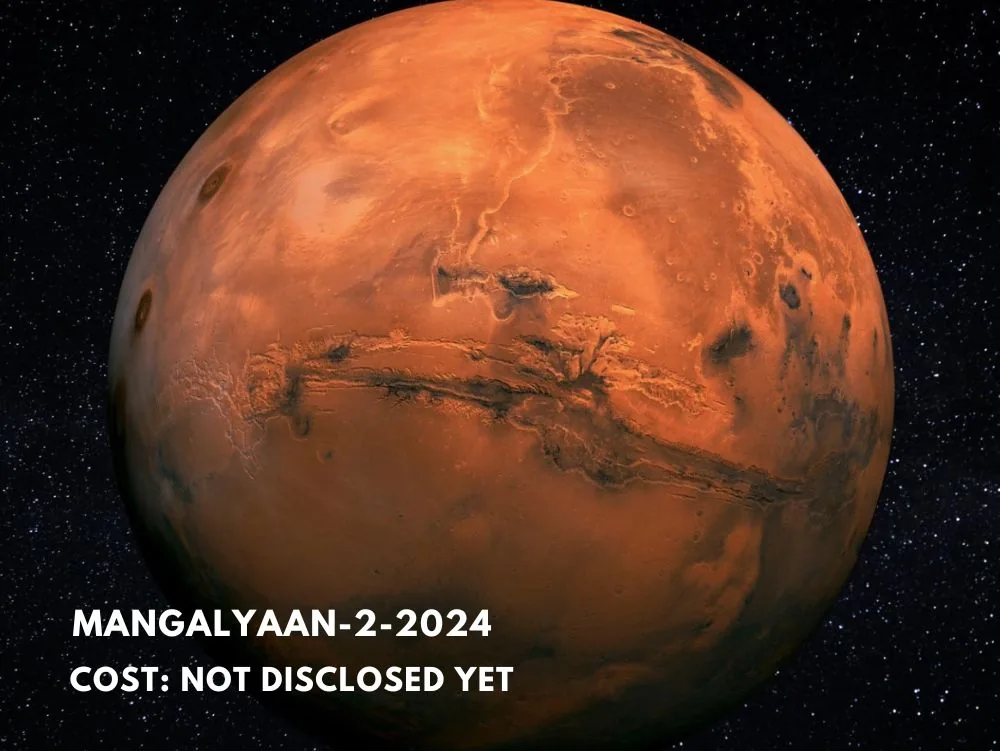
Expected Cost: Not Disclosed Yet
The second interplanetary project proposed by ISRO for India is the Mars Orbiter project 2, also known as Mangalyaan-2. By 2024, ISRO intends to launch this mission.
It had been mentioned that Chandrayaan-3, a lunar mission, will launch before Mangalyaan-2. According to reports, the mission will have a hyperspectral camera, a high-resolution panchromatic camera, and a radar to study recent basalts, boulder falls, and the early Martian crust.
5. Gaganyaan-2024
Expected Cost: Rs 9023 Crore
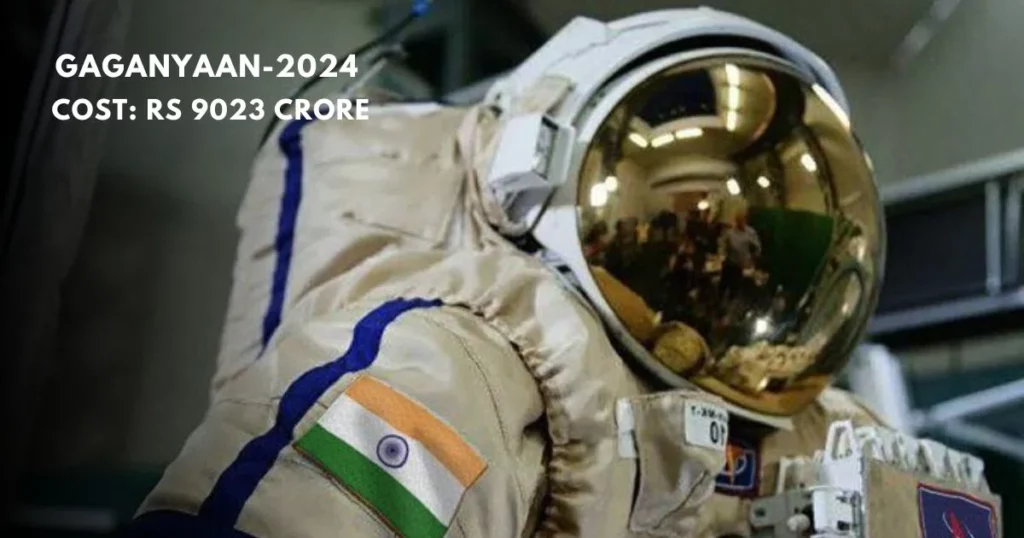
India’s first human space mission, Gaganyaan, is scheduled to launch in 2024. The first unmanned mission, known as the “G1 mission,” will launch in the fourth quarter of 2023, followed by the second unmanned mission, known as the “G2 mission,” in the second quarter of 2024, and the final human space flight, known as the “H1 mission,” in the fourth quarter of 2024.
6. Shukrayaan 1–2031
Expected Cost: Rs 500 Crore – Rs 1,000 Crore
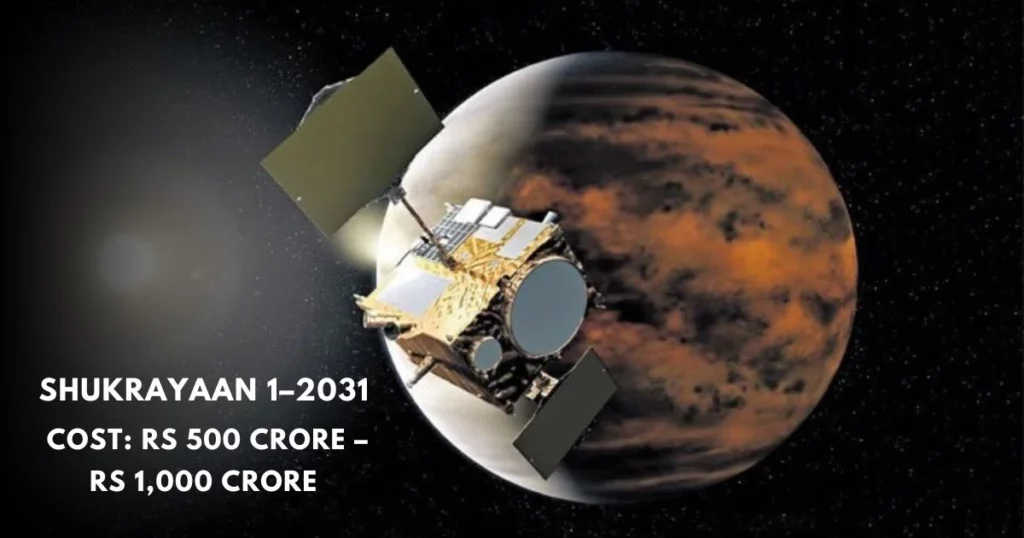
P. Sreekumar, the Satish Dhawan Professor at ISRO and advisor to its space research programme predicted earlier this year that the Venus mission, known as Shukrayaan I, will launch in December 2024. The concept was conceived in 2012, more than ten years ago.
The best time to launch from Earth to Venus is once every 19 months. In case it misses the 2024 window, ISRO has “backup” launch dates in 2026 and 2028. But every eight years, new better windows present themselves that further cut down on the quantity of fuel needed for takeoff.
